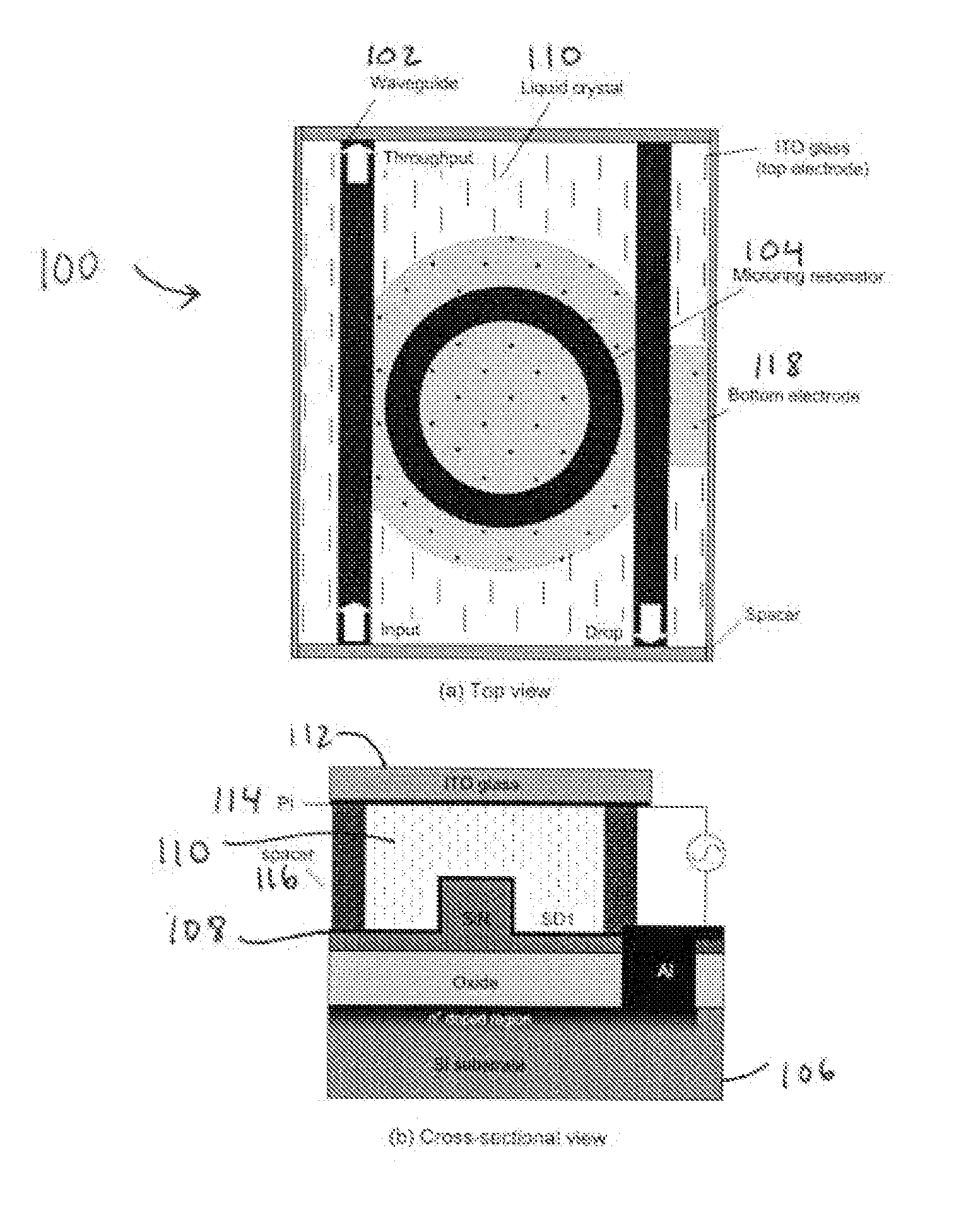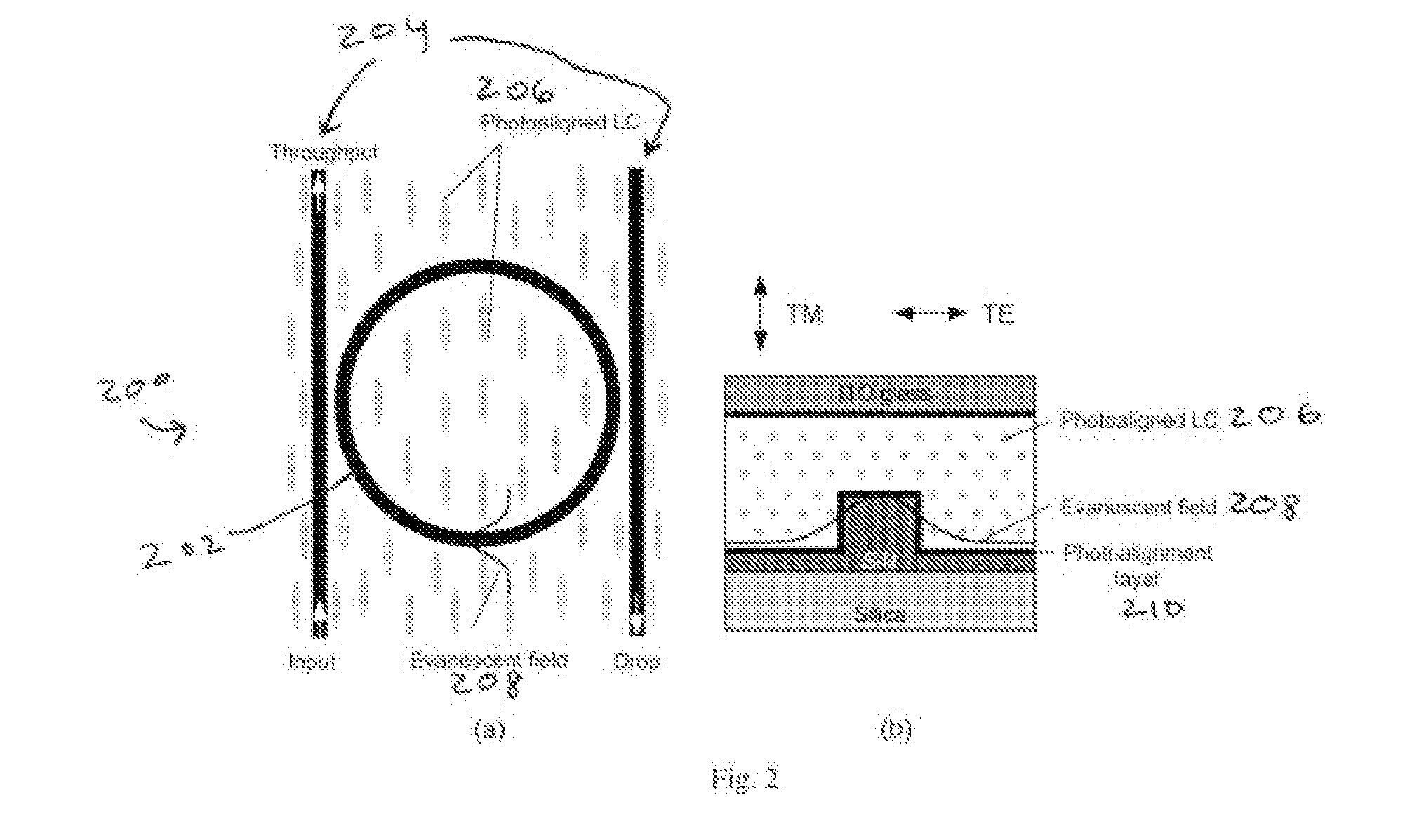Electrically Tunable Microresonators Using Photoaligned Liquid Crystals
a liquid crystal and photoalignment technology, applied in the field of optical devices, can solve the problems of difficult realization of silicon-based electro-optical devices, inability to readily leverage from the multi-billion-dollar establishment of the silicon microelectronics industry, and inability to easily integrate photonic and optoelectronic devices with mainstream silicon microelectronics, etc., to improve the quality and reliability of switching
- Summary
- Abstract
- Description
- Claims
- Application Information
AI Technical Summary
Benefits of technology
Problems solved by technology
Method used
Image
Examples
Embodiment Construction
[0047] The numerous innovative teachings of the present application will be described with particular reference to the presently preferred embodiment (by way of example, and not of limitation).
[0048] The present innovations include, in one example embodiment, an electrooptically tunable waveguide coupled microresonator. In preferred embodiments (described more fully below), the innovative device includes a photoalignment layer as part of the cladding, which is in turn covered by a liquid crystal region. Non-flat surfaces, such as the surface of a silicon chip with waveguides and microring resonators described herein, have edge profiles that cause intrinsic alignment of liquid crystal. This alignment causes the LC director to take a fixed position in the region near the evanescent field, or close to the resonator and waveguide (which are formed as relatively tiny surface structures, and thus have edges). The director is held at this position at a certain strength that can be describ...
PUM
 Login to View More
Login to View More Abstract
Description
Claims
Application Information
 Login to View More
Login to View More - R&D
- Intellectual Property
- Life Sciences
- Materials
- Tech Scout
- Unparalleled Data Quality
- Higher Quality Content
- 60% Fewer Hallucinations
Browse by: Latest US Patents, China's latest patents, Technical Efficacy Thesaurus, Application Domain, Technology Topic, Popular Technical Reports.
© 2025 PatSnap. All rights reserved.Legal|Privacy policy|Modern Slavery Act Transparency Statement|Sitemap|About US| Contact US: help@patsnap.com



